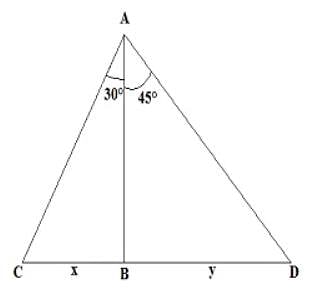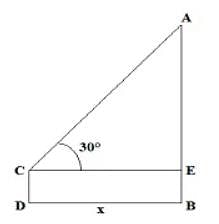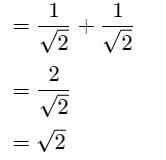DSE Odisha TGT Science PCM Mock Test - 8 - OTET MCQ
30 Questions MCQ Test - DSE Odisha TGT Science PCM Mock Test - 8
Which two Union Territories were merged into a single UT?
Which branch of the Indian Armed Forces is primarily responsible for securing Indian airspace?
| 1 Crore+ students have signed up on EduRev. Have you? Download the App |
The basin of Talcher coalfield mainly occupies the
A man standing on the terrace of a building watches a car speeding towards him. If at that particular instant the car is 200 m away from the building makes an angle of depression of 60° with the man’s eye and after 8 seconds the angle of depression is 30°, what is the speed of the car?
On the two sides of a road are two tall buildings exactly opposite to each other. The height of the taller building is 60 m. If the angle of elevation from the top of the smaller building to the top of the taller one is 30° and the angle of depression from top of the taller building to the foot of the smaller one is 30°, then find the height of the smaller building.
What is the area of a right-angled triangle with 12 meter base and 13 meter hypotenuse?
The area and the perimeter of a circle are x cm2 and y cm respectively. If ‘x + y = 704’, what is the area of the circle?
What is the distance between a tower and an observer if the angle of elevation from the observer’s eye to the top of the tower (height = 50 m) is 30°? The observer is 1.5 m tall.
An observer 1.6 m tall is 20√3 away from a tower. The angle of elevation from his eye to the top of the tower is 30º. The heights of the tower is:
Which of the following is not an agent of socialisation process in the life of a learner?
Which component of the Government of India has the objective of development of children?
Given below are two statements, one leveled as Assertion (A) and the other leveled as Reason (R) :
Assertion (A) - In the integrated system of education emphasis is on ‘fitting’ the child into the system and preparing the child to adjust to the expectations of the classroom.
Reasoning (R) - In the inclusive system of education, an Individualized Educational Plan (IEP) is developed for those students who have special needs.
Answer the following question by selecting the most appropriate option.
The following are the steps in the process of problem-solving except:
Which of the following strategies will work for mentally retarded children?
An unpolarised beam of intensity 2a2 passes through a thin polaroid. Assuming zero absorption in the polaroid, the intensity of emergent plane polarised light will be
The bluish color predominates in a clear sky,
A convex and a concave mirror of radii 10 cm each are facing each other and 15 cm apart. A point object is placed midway between them. Then position of the final image if the reflection first takes place at the concave mirror and then in the convex mirror is
The resistance of a conductivity cell containing 0.001M KCl solution at 298 K is 1500 Ω. What is the cell constant if conductivity of 0.001M KCl solution at 298 K is 0.146 × 10-3 S cm-1.
The position of both, an electron and a helium atom is known within 1.0 mm. Further more the momentum of the electron is known within 5.0 x 10-26 kg ms-1. The minimum uncertainty in the measurement of the momentum of the helium atom is
denotes the greater integer less than or equal to x
The area enclosed between the curves y = √x , x = 2y+3and the x-axis is



 CD = BD – BC = 200 – 66.67 = 133.33 m
CD = BD – BC = 200 – 66.67 = 133.33 m Speed = 133.33/8 = 16.67 m/s
Speed = 133.33/8 = 16.67 m/s























